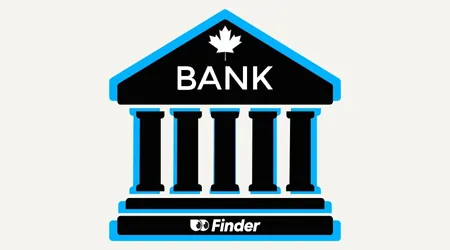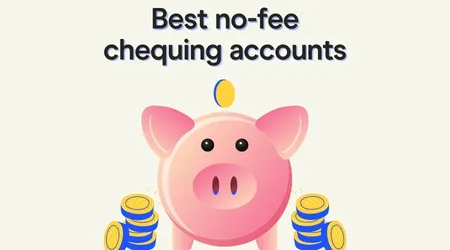Opening a savings account is easy in Canada. You can do it online, through a bank’s mobile app or at a bank branch. So, whether you’re setting up an account for everyday savings, aiming for higher interest or looking for tax benefits, follow these steps to make the process go smoothly. Here’s a breakdown of the key steps involved in opening a savings account.
Can you open a savings account online?
Yes, you can easily open a savings account online with most banks and credit unions in Canada. Many financial institutions have streamlined the process, allowing you to open an account from the comfort of your home without visiting a branch.
All you need is access to a computer or smartphone and a stable internet connection. To begin, simply visit the bank’s website, choose the type of savings account you want and fill out the online application form.
You’ll be asked to provide documentation like government-issued ID and proof of address. The entire process usually takes just a few minutes to complete.
Which banks let you open a savings account online?
These days, there are plenty of banks that allow you to open a savings account online. Below is a list of some of the banks that offer online savings accounts, along with the respective interest rates of each:
| Bank | Savings account | Interest rate | |
|---|---|---|---|
EQ Bank | Notice Savings Account | 2.85% - 3.00% | |
Simplii | High-Interest Savings Account | 4.25% for 4 months, 0.3% thereafter | |
KOHO Essential Plan | High-Interest Savings Account | 2.5% | |
Scotiabank | MomentumPLUS Savings Account | 5% for 3 months, 0.55% thereafter | |
Tangerine | Savings Account | 4.50% for 5 months, then 0.30% thereafter | |
NEO | Cash Account | 2.5% | |
RBC | High Interest eSavings | 0.75% thereafter | |
TD | TD Growth Savings Account | 0.5% – 1.3% | |
BMO | Savings Amplifier Account | 4.70% until September 30, 0.8% thereafter | |
CIBC | eAdvantage Savings Account | 4.9% for 3 months, 0.25% – 1% thereafter |
Steps to open a savings account in Canada
Here are the six steps to follow when you open a savings account online:
- Choose the right bank or credit union
- Choose the type of savings account
- Gather necessary documentation
- Open the account online or in person
- Make your initial deposit
- Set up online and mobile banking
1. Choose the right bank or credit union
The first step is to research and choose a bank, fintech or credit union that aligns with your financial goals. Compare factors like savings interest rates, fees and minimum balance requirements to find the best option.
You can start by looking at well-known institutions (like RBC and Scotiabank) digital banks (like Tangerine, EQ Bank and Simplii) or consider your local credit unions.
Interestingly, some of the highest interest savings accounts available in Canada are not offered by the Big Banks but are instead offered by digital banks like EQ Bank and Simplii Financial.
2. Choose the type of savings account
Next, decide which type of savings account you need. Basic savings accounts are ideal for storing money with modest interest, while high-interest savings accounts offer better returns but may have conditions. If you’re looking for tax advantages, consider a Tax-Free Savings Account (TFSA), which allows your money to grow without tax.
3. Gather necessary documentation
In most Canadian financial institutions, you can either provide two documents—one showing your name and address and another confirming your name and date of birth—or one document indicating your name and date of birth with verification from a bank customer or community member. These documents can include utility bills, Canadian-issued ID, bank statements and more.
4. Open the account online or in person
Once you’ve selected a bank and gathered your documents, you can open the account either online or in person. Online banking portals typically guide you through the process, letting you upload documents and confirm your identity. If you prefer face-to-face interaction, you can visit a local branch and complete the process with the help of a bank representative.
5. Make your initial deposit
After your account is approved, you’ll need to make an initial deposit to activate it. This can usually be done through a bank transfer from an existing account or by depositing cash or a cheque at a branch or ATM. Be sure to check if the bank has a minimum deposit requirement for your specific account type.
6. Set up online and mobile banking
Finally, set up online and mobile banking to manage your savings easily. This will allow you to transfer funds, monitor transactions and even automate savings. By enabling these features, you can track your financial progress and make the most of your savings account.
How to open a tax-free savings account
Wondering how to open a tax-free savings account (TFSA)? Simply follow the same steps as you would with a standard savings account. First, you’ll need to decide between financial institutions, such as banks, fintechs, credit unions or insurance companies, that offer TFSAs.
Then follow the account’s online signup process. Like opening a savings account, you’ll need to provide your Social Insurance Number (SIN) and date of birth to set up your TFSA.
Your financial institution may request additional documents to verify your information. Upload the required documents, and then start saving once you’re approved.
Factors to consider when opening a TFSA
You can open more than one TFSA, but remember that your total contributions across all accounts cannot exceed your annual contribution limit. Your contribution limits depend on what year you were born — you can find more information on your limit at Tax-Free Savings Account (TFSA), Guide for Individuals.
It’s crucial to provide accurate details—if the TFSA isn’t properly registered, any income earned will be subject to taxes, and you’ll have to report it on your income tax return. Once your account is registered, you’ll be able to enjoy tax-free growth on your contributions.
How to open a high-yield savings account
The process of opening a high-yield savings account in Canada is similar to opening a regular savings account, as mentioned above. Here are a few additional things to keep in mind:
Research high-yield accounts
Begin by comparing banks and financial institutions that offer high-yield savings accounts. Online banks like EQ Bank and Simplii Financial often provide higher interest rates than traditional banks. Be sure to check for fees, minimum balance requirements and account restrictions before choosing the right option.
Competitive APY
When choosing a high-yield savings account, a competitive annual percentage yield (APY) is typically more appealing to users. A higher APY means your savings will grow faster, so compare the rates offered by different banks and credit unions. While searching, focus on institutions that have a solid reputation for reliability and customer service.
Eligibility and documentation
As with regular savings accounts, you’ll need to verify your identity with information requested by the bank like government-issued ID and proof of address. These documents help verify your identity and allow the bank to report interest earned to the government.
Open and fund your account
Once you’ve chosen a high-yield account, the application process is similar—most accounts can be opened online. After approval, make your initial deposit, which will start earning interest based on the current rate.
What is the best savings account to open?
The best savings account for you in Canada depends on your financial needs. For high interest rates and no fees, options like EQ Bank’s Notice Savings Account and KOHO Savings Account are popular choices.
Both offer competitive rates without monthly fees or minimum balance requirements and are ideal for maximizing your savings.
Other great options include Simplii Financial’s High-Interest Savings Account, backed by CIBC, and the PC Money Account, which offers one of the top rates on the market.
When choosing the right account, focus on interest rates, fees and your access needs. Each of these accounts offers different benefits, so pick the one that aligns with your goals.
Should I open a savings account?
Opening a savings account can be a smart way to grow your money securely while earning interest. It’s ideal for building an emergency fund or saving for short-term goals, such as a vacation or a big purchase.
If you’re looking to maximize your savings, consider options like high-yield savings accounts, which offer better interest rates, or Tax-Free Savings Accounts (TFSAs), where your savings grow tax-free.
In short, if you want a safe place to keep your money with the potential to earn interest, a savings account—especially a high-yield or TFSA—can be a great choice.
What to consider before opening a savings account
Before opening a savings account, there are several factors you should carefully consider to ensure you choose the right one for your financial goals. Here are the key points to keep in mind:
1. Interest rates and APY (annual percentage yield)
Depending on your goals, you may want to look for accounts offering competitive interest rates and a high APY, as these determine how fast your savings grow.
2. Fees and minimum balance requirements
Look out for any fees, such as monthly maintenance fees, which can reduce the amount of interest you earn. Some banks waive these fees if you meet specific requirements, like maintaining a minimum balance.
3. Access to funds
While a savings account is meant for storing money, you’ll still want to access your funds easily if needed. Check if the account comes with an ATM card, the availability of online banking options and whether you can transfer between accounts.
4. CDIC insurance
Ensure that the bank is CDIC-insured, meaning your deposits are protected up to $100,000 per depositor. This provides peace of mind that your money is safe, even in the event of a bank failure.
5. Account features
Look for helpful features like automatic transfers from chequing accounts, mobile deposits, overdraft protection and budgeting tools to simplify saving and managing your money.
Why would I be denied a savings account?
A bank may decline to open a savings account for several valid reasons, including:
- Suspicion of fraudulent use: If the bank believes your account may be used for illegal activities, such as money laundering or fraud, it can refuse your application.
- Past criminal activity: A history of illegal or fraudulent activities with financial institutions within the past seven years can be a basis for denial.
- False information: If the bank suspects that you knowingly provided false information on your application, it may choose not to proceed with your application.
- Potential harm to others: If the bank has reason to believe that you might harm or harass its employees or customers, it can deny your request.
- Account linking requirements: Some banks may require that you already have an account with them before opening certain types of accounts. If you do not have an existing account, your application could be denied.
- Verification issues: Banks must verify the validity of your identification. If you do not allow them to take the necessary steps to confirm your ID, it may lead to denial.
Bottom line
Opening a savings account is a smart step towards securing your financial future. Whether you’re looking for a basic savings account, a high-yield option or a TFSA for tax-free growth, the process is straightforward.
Remember to compare interest rates, fees and accessibility to find the best account for your needs. With the right savings account, you can safely store your money and reach your financial goals.
Frequently asked questions about opening a savings account
More banking guides from our experts

Banking statistics and trends in Canada for 2025
Explore key banking statistics and figures from the Finder: Consumer Sentiment Survey January 2025.
Read more…
Best free (no-fee) chequing accounts in Canada
Compare the features of 8 of the best no-fee chequing accounts in Canada, and find out how to avoid transaction fees.
Read more…
16 best new bank account offers for August 2025
Earn cash, rewards points, bonus interest rates and more with these new bank account offers and promotions.
Read more…
Best youth bank accounts in Canada
Learn about the different types of bank accounts for your teenager and how to choose the right one.
Read more…
Best chequing accounts in Canada for 2025
Compare chequing accounts and learn about our top picks. Compare different features and see which one is right for you.
Read more…
Open a bank account online in Canada in 5 easy steps
Compare and open a bank account online in Canada in as little as 5 minutes. Learn what you need to apply and how to get started today.
Read more…More guides on Finder
-
5% to 12% interest on savings accounts: Fact or fiction?
From a 4% to a 5% interest savings account, here’s how to find the best savings rates in Canada.
-
Savings account interest rates
Compare current savings account interest rates so you can grow your savings.
-
Neo Cash Account Review
Earn a high interest rate on your savings with no minimum deposit requirements and no monthly fees with the Neo Money Account.
-
How to budget for a new home
Discover how to budget for a new home, save effectively and plan for ongoing expenses.
-
How to build and manage an emergency fund in Canada
Explore how to create an emergency fund in Canada and where to grow your savings.
-
TFSA Guide: How Tax-Free Savings Accounts Work
Maximize your savings with a TFSA, enjoying tax-free growth, flexible withdrawals and diverse investment options.
-
Guide to registered retirement savings plans (RRSPs) in Canada
Start saving for your retirement at any age by learning about registered retirement savings plans.
-
Best high-interest savings accounts in Canada for August 2025
Compare the best high-interest savings accounts in Canada to build a bigger bank balance.
-
How to save tax in Canada on interest income in a savings account
Savings account interest is taxable in Canada. Find out how taxation works and how to minimize what you owe.
-
Compare Canadian credit union savings accounts
Find out about competitive interest rates, minimal fees and other perks you can enjoy when you bank at a nonprofit institution.
